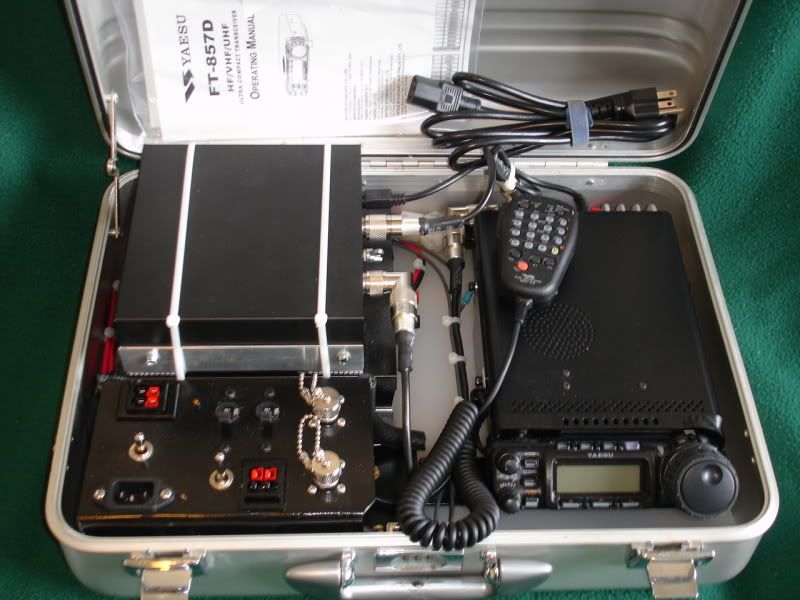In honor of some of the great boxes that have been shared, here is my version. It is inspired by ar-jedi (like a LOT of the others), but with a few twists.
* No fuses (sound familiar?).
* Capable of being powered by either 12VDC or 120VAC.
* No fast-on connectors for high-current connections
* I put a lot of thought into having batteries in a box, but this thing weighs 23 pounds like it is. My antenna systems are packaged separately anyhow, so it is not a huge to carry another box.
* Self-contained as much as practical.
* Small size (it's all relative).
* Use existing case (I had the case laying around from a different project). The other choice was a BIG Pelican box that I have laying around, but this worked out better, I think.
* I wanted to be able to plug and play without futzing around with removing from a case to allow airflow.
* I wanted HF capabilities.
* After a bit of soul-searching, if it isn't needed, it isn't in the box.

Here is the case

Here is the packaging of the components. All of the components are mounted to a Wal-Mart cutting board that has been cut to size and contoured to fit the case. All of the high-current power runs down the left side and the back. The center is reserved for coax and ground wires that tie everyone together. This actually worked out pretty not bad.


Here is the radio. As it is set into the case, the head is mounted up and on a 45degree angle. It is moved slightly to the left to allow access to the buttons on the right side of the dial. The fancy microphone gets to ride inside a clean gym sock in between the radio and power supply.

Here is a close-up of the tuner. The tuner is mounted to the top of the switching power supply using 3M Dual Lock tape. It is secure, but it is stabilized using TyWraps. The 'custom' brackets are made from aluminum angle as neither the tuner or power supply is designed for a portable application. The power supply has been mod'd with a Silenx case fan. It moves a lot more air and does it almost inaudibly.

Here is the panel that houses the external connections. It is fabricated from sheet steel formed into a 3x4 rectangle. The power connections are on the left side. 12VDC on the top through 45amp PowerPoles, 120VAC on the bottom. The wire is all 10 gauge (it will be 12 gauge next time). The DPDT center-off switch in the center switches between the two sources. The LED indicators to the right of the inputs illuminate when the respective sources are active. The 25 AMP circuit breaker supplies current to the radio. The 10 AMP breaker supplies the AUX PowerPole connectors just below. The other switch is a battery saver and limits the radio to 20 watt output. The radio has a built in volt meter, so an external one would be redundant for me. The antenna connections are VHF/UHF on the top and HF on the bottom.
Anyhow, I am wide open for suggestions! I carry my dipole in a battery jumper cable bag along with the PowerPole extension cords, adapters, and coax.
 Win a FREE Membership!
Win a FREE Membership!